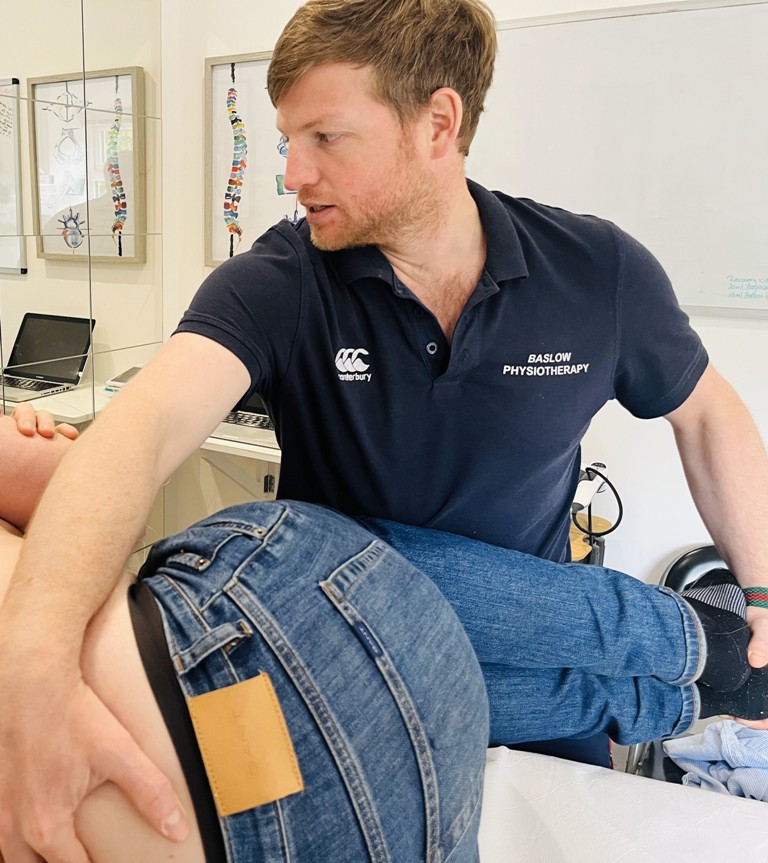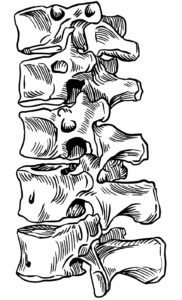Back Pain and Physiotherapy | how best to manage it

Did you know that lower back pain is very common and will affect many of us at some point in our lives? It could be compared to headaches or stomach cramps and can often be managed quickly with the right input and advice. Keeping active and strong can reduce the risk of developing back pain and positively impact on how well an individual will recover. We believe that having the right information about back pain and what to do to self-empower us can be very helpful.
Firstly, backs are really strong. This is important, because if we worry that our backs are weak, evidence suggests that we are less likely to have confidence in how we move which can increase any pain we may feel. While lower back pain can be frightening, it’s important to understand that the majority of cases, experienced by most individuals, are rarely life-threatening or likely to result in permanent disability (less than 0.5%).
The good news is that most lower back injuries or back strains heal within 12 weeks; most mechanical back pain feels 50-70% better in the first 2 weeks. Back pain can be well managed with physiotherapy.
While it can significantly impact daily life and activities, understanding the causes, symptoms, prevention strategies, and treatment options can help individuals effectively manage and alleviate lower back pain.

Common causes of Lower Back Pain:
Lower back pain can arise from various factors, such as a muscle strain or injury, age related conditions such as osteoarthritis or disc injuries, and less common underlying medical conditions like spinal stenosis or ankylosing spondylitis. Identifying the specific cause of lower back pain is key in determining the most appropriate treatment approach.
Common Symptoms:
Symptoms of lower back pain can vary widely and may include dull, aching discomfort, sharp or shooting pain, stiffness, limited range of motion, and difficulty standing or walking for prolonged periods. In some cases, nerve involvement can occur, and lower back pain may be accompanied by radiating pain into the buttocks or legs, numbness or tingling sensations, and weakness in the lower extremities. The type of symptoms you’re getting will all be identified within your physiotherapy appointment.
Fact or Fiction?
- Bad posture causes back pain – Fiction | It is widely accepted that there is no such thing as bad posture. Pain in a certain position means that you have been in that position for too long rather than the posture being wrong. Moving between different postures and positions can be helpful in reducing symptoms of back pain.
- Scans are often not required – Fact | in some cases scans are helpful, but for a large proportion of patients they do not offer further information and can cause further worry. This is because perfectly normal changes to the spine can cause people to avoid the activities they should be doing to get better, such as exercise and movement in general.
- “I should stay in bed and rest until my back pain improves” Fiction | While it can be helpful to avoid aggravating activities during the first few days of back pain, it is important to try to keep active once pain starts to settle. Evidence suggests that prolonged bed rest actually increases the likelihood of ongoing disability and factors such as time off work
- Short term use of pain relief (anti-inflammatories) to get you moving is useful, but long term opioid use isn’t very effective – Fact | pain relief is recommended in the early stages of an injury as prescribed by your doctor, however over time they can become less effective and other ways to manage pain are recommended – especially exercise. (reference CSP 2017)
- Sleep can be a key factor in pain management – Fact | The role of sleep in addressing back pain has become more evident in recent times. Quality sleep is vital for lowering stress levels and enhancing overall well-being, which helps reduce susceptibility to pain triggers and improves coping mechanisms when pain arises
See more information from our professional body (Chartered Society of Physiotherapists) for more information
Prevention Strategies:
Sometimes, there isn’t much that an individual could have done to prevent a back injury. Activities such as bending, twisting and lifting, making a bed or carrying an awkward load can be a trigger.
However, there are simple lifestyle modifications that can help to reduce this risk and are also more likely to improve the speed of recovery. Maintaining a healthy weight through a balanced diet puts less load on the joints within the body. Move in some way each day, whether walking the dog, simple stretches or specific exercises e.g. an exercise class, this can be hugely helpful. If your job involves desk-based work or sitting for long periods of time, try and incorporate regular breaks and mobility exercises into your daily routine
Exercise for Lower Back Pain:
Exercise plays a crucial role in both preventing and managing lower back pain. Specific exercises can help strengthen the muscles supporting the spine, improve flexibility and range of motion, and alleviate discomfort; they also make us feel good with endorphin and dopamine release. Examples of beneficial exercises for lower back pain include pilates or yoga or low-impact aerobic exercises (e.g., walking, swimming, cycling). These are some simple exercises to help get your back moving, keep the repetitions low to begin with e.g. 5-8 and increase as able. Progression of exercises needs to be individual to work on individual requirements, see a physiotherapist for specific exercise recommendations. Remember, don’t push through pain with any of these exercises, they should be comfortable to do.
- Pelvic tilts:
Lying with knees bent, slowly flatten your back on to the floor or mat and then move your pelvis forwards in the other direction. Try to make sure you are not holding your breath during the movement.
- Knee rolls
In lying, with both knee bent. Slowly allow your knees to roll one way and then the other. Control the movement at all times. It can feel good to blow out as your pull your knees back to the middle
3. Knee hugs
Draw one or both knees towards your chest and hug them. Hold for 30 seconds and release
4. Cat/Cow
In 4 point kneeling, allow your back to curl up towards the ceiling (like a cat) and then as you breathe, slowly lower down towards the mat/floor (like a cow?). This is good for control and mobility but take it nice and slowly.
5. Bridging
Lying on your back begin the pelvic tilt as above and then keep the movement going by pushing through your feet and squeezing your gluteals.
What if my back pain continues more than 12-16 weeks?
Research around pain, especially persistent pain is growing all the time, and the factors that contribute to pain are more complex that was previously understood. Persistent pain, unlike acute pain, does not (for most people) indicate on-going damage. Rather, the pain is more to do with changes in the nervous system than with an on-going injury. Changes in the nervous system can be influenced with things such as: sleep quality, relationships, stress/tension or the ability of the nervous system to unwind. These factors are often explored further within physiotherapy treatment to help to better manage pain.
Don’t Fear Back Pain – Take Proactive Steps:
Don’t let fear dictate your response to lower back pain. Take proactive steps by seeking guidance and treatment from a qualified physiotherapist or healthcare professional. They can offer personalised advice and a range of treatments, including manual therapy, targeted exercises, ergonomic adjustments, and pain management strategies. Understanding and addressing lower back pain can empower you to regain control and enhance your overall well-being. Remember, you’re not alone – don’t hesitate to reach out for support whenever you need it.
At Baslow Physiotherapy we see people regularly with back pain. Get In Touch if you are having problems or would like advice on how to stay active and keep strong. Or Book Online for an appointment.
